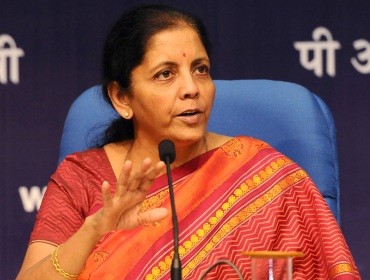
Last week, when Finance Minister Nirmala Sitharaman met Manmohan Singh, an Oxford economist, and former FM and PM -- the first by any incumbent FM in recent times ahead of Budget -- the underlying message was evident. That she prefers to do things differently.
Friday's Union Budget, is also NDA's seventh, and Sitharaman's approach taking everyone on board could help overcome the seven-year itch -- a time of potential crisis in a marriage or in this case the alliance between voters and the government.
Clearly, the FM needs to ensure there's something fresh and new in her red Box as all key themes like the mega pension programme or single-day refunds for taxpayers have all been briefed out by her predecessors.
While she's at it, Sitharaman may refer to her party's past experiments for learnings and takeaways, to avoid a repeat of policies that failed spectacularly like the Startup India or semi-successful initiatives like Make in India.
While NDA-I's intention to spur manufacturing was noble, it's timing wasn't for two reasons. One, given the Chinese dominance in everything from needles to nanotechnology, imports are cheaper than domestic production not just for India but also developed nations. Take the US, where despite all the optics about protectionism, Apple just moved production of Mac Pro, the only major device assembled at its home base, to -- no prizes for guessing -- China!
Two, thanks to automation, manufacturing no longer creates scores of jobs and is now both capital and technology-intensive. In the end, the government's aggressive overseas sales pitch failed to revolutionize manufacturing, though it added some meat on the bones of domestic companies as local sourcing was made mandatory for government projects including defence.
Similarly, the Rs 10,000 crore boost for startups barely materialized. It's not that the sector needed funds, and there's excess hot money chasing upstarts anyway. Ease of regulations, and end of tax terrorism was what entrepreneurs sought and still asking for.
While NDA-I rightfully recognized MSMEs and rewarded them with formal credit, more needs to be done, particularly now that NBFCs, one of the key sources of finance, are under the cosh.
Given that economic growth has gone from good to bad, it's high time to support the old saw -- agriculture. It's contribution to GDP is just 16-17 per cent, but because 60-70 per cent population depend on it, agri-reforms, when rolled out in true spirit -- instead of quick fixes like minimum support prices or income support schemes -- can lift India out of the economic quicksand.
Private players should be roped in to build supply chains, and build platforms to sell produce directly eliminating middlemen. Making agriculture profitable and sustainable should be the cornerstone of NDA-II, as it can have a multiplier effect, boost services sector, increase demand and consumption, and benefit the overall economy.
Other prominent measures could be asset sales of PSUs including distressed entities like Air India or BSNL, stake sale in nationalized banks, and land and labour reforms. Consumer-facing industries like auto and consumer durables have a cap in hand, so tax reliefs cannot be ruled out. The absence of all these measures will imply that Indian economy continue to be on a growth turnpike, where instead of the potential 8-9 per cent, growth will survive within the vicinity at say 6-7 per cent.
The Interim Budget in February broadly outlined the revenue and expenditure receipts for FY20 and Friday's follow-up is unlikely to differ significantly in terms of numerical allocations.
That said, Friday will be Sitharaman's moment in the spotlight and she might as well use Budget 2020 as Part 1 of her structural reforms agenda, with sequels to follow in the next five years.


.jpeg)

